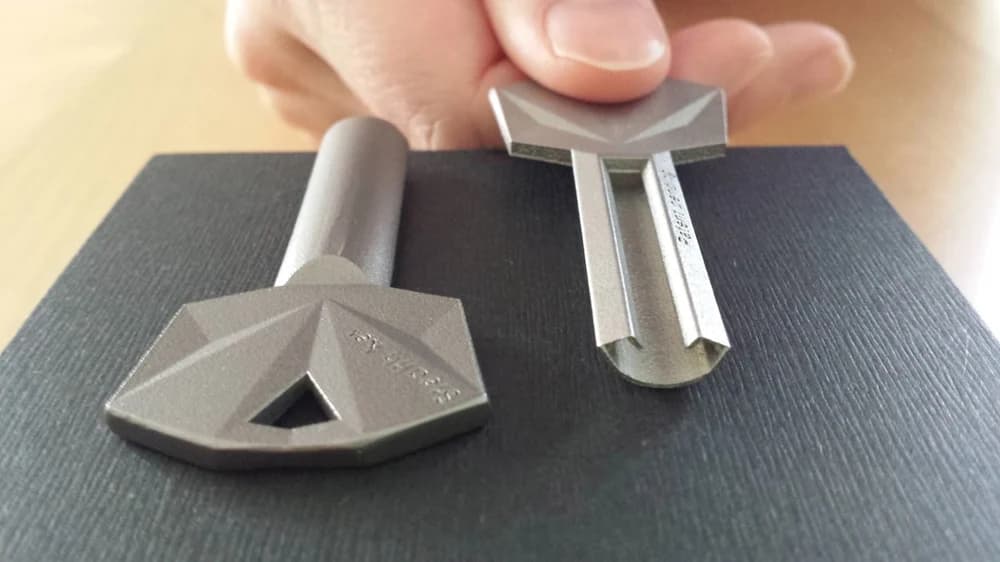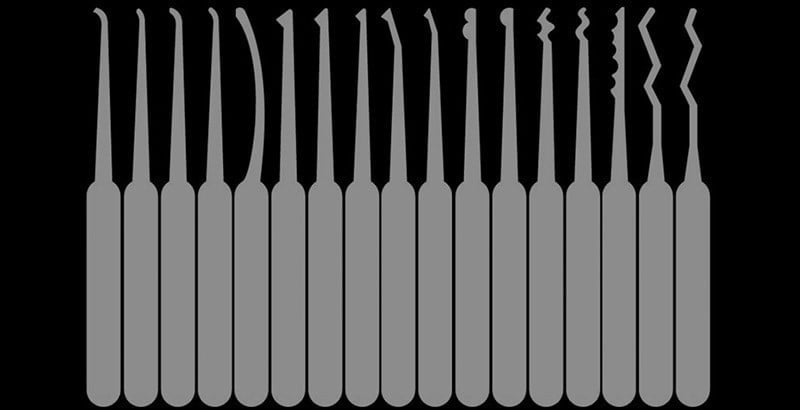Unlocking the Future

Although lock and key systems have seen some digital innovations in recent years, for most, key, pin, and tumbler mechanisms remain the status quo. Perhaps this is because there aren’t any serious concerns when it comes to the reliability of a lock. Picking is possible, but that it’s difficult and time-consuming, and high-security locks make it impossible.
Enter 3D printers: machines that can replicate nearly any physical shape, are easily programmable, and are relatively cheap to buy. Could this new technology begin to disrupt our physical security?
As we’ll see, 3D printing your own key, be it for fun or mischief, may be easier than ever, but it still remains impractical. 3D printing metal isn’t trivial, and neither is copying a key.
Below, we’ll look at several different projects that relate to 3D printed keys for hacking locks as well as a special one that looks to eliminate the threat of 3D printed keys.
The Stealth Key
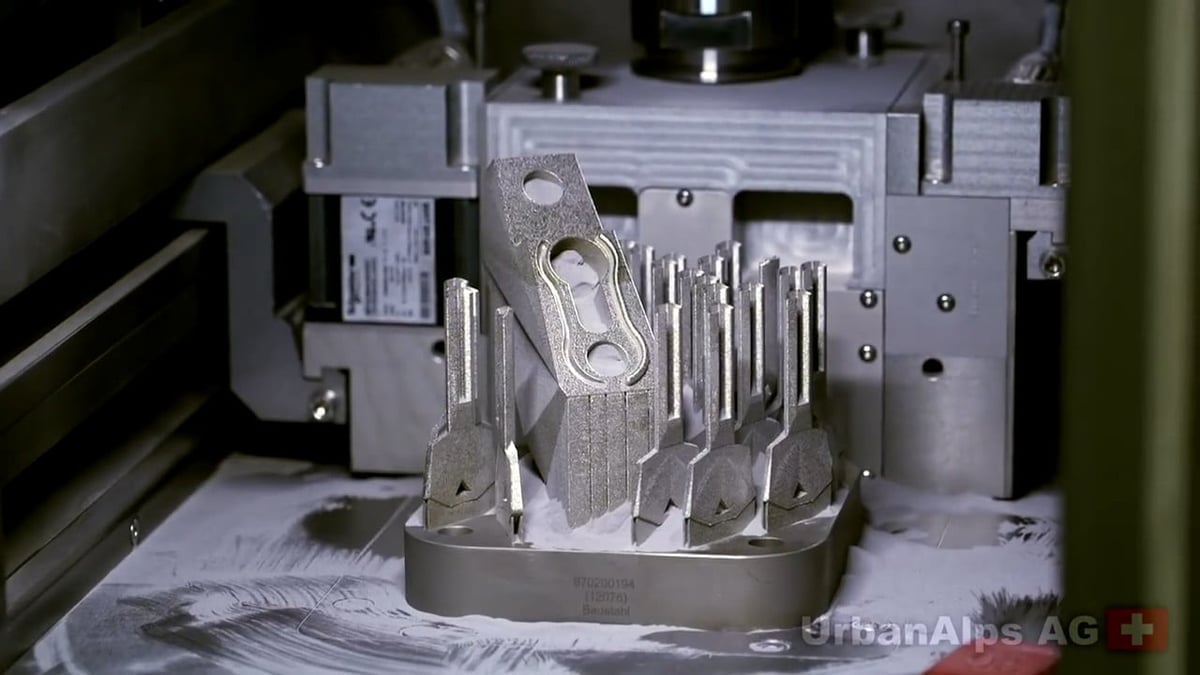
When it comes to 3D printed keys, most of us think of breaking in, but this group of engineers focused more on keeping people out.
If there’s something that the items in this article show us, it’s that 3D printing will continue to threaten lock security. Urban Alps has observed this and thus created the Stealth Key.
The main idea behind the Stealth Key is to prevent duplication while keeping the ruggedness of mechanical locks. With a slightly rounded “barrel”, the key looks simple, but hiding within are its teeth, or code, under the flanges of the unassuming channel cut into the side. The accompanying lock also improves security, as demonstrated in the 10th Czech Lockpicking Championship, in which it proved to be entirely unpickable.
A high-security key like this comes with high-caliber 3D printing. The stealth key is printed using SLM technology, and by using 3D printers, Urban Alps can customize and ship quickly. To achieve this, they’ve partnered with Feildmade’s microfactories.
It’s exciting to see the benefits of 3D printing being employed to produce better products. In this case, it seems that the threat of 3D printing to security has brought its own solution.
Photo Scanners
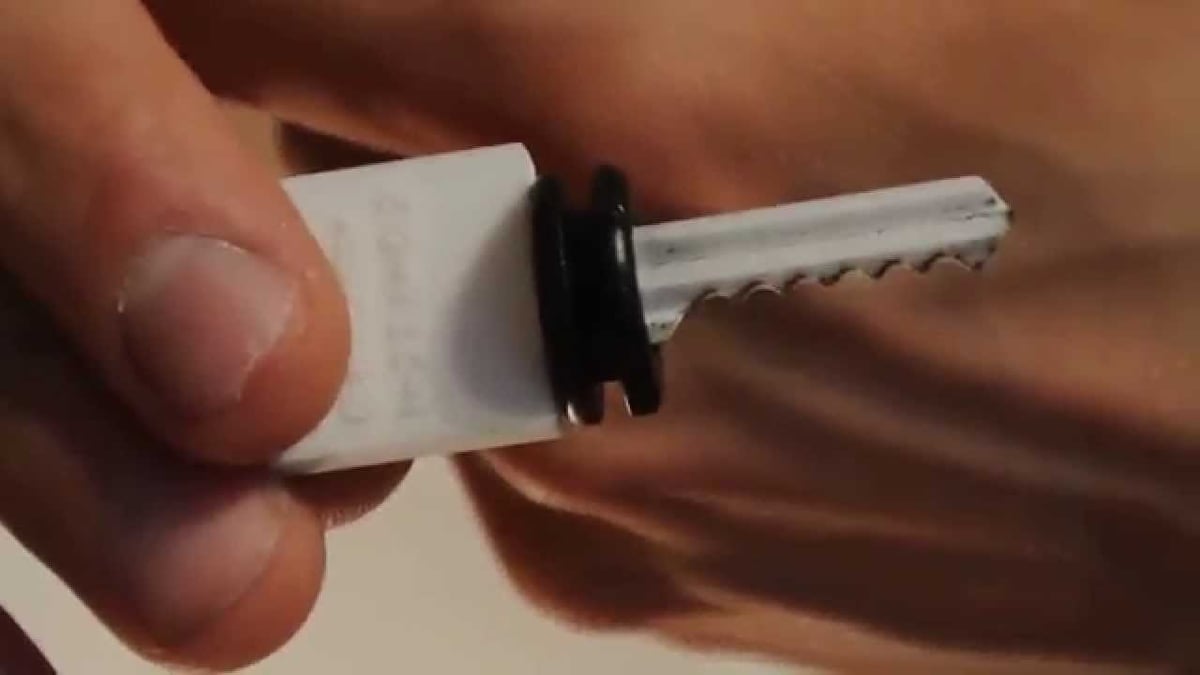
Instead of manually modeling and measuring a key, these projects take out most of the precision work in creating a key. In proper James Bond fashion, these programs use images as the basis for the creation of 3D key models. Both, as we’ll see, automate the process of creating a key to a seriously worrying degree.
KeysForge
KeysForge uses computer vision to create, or forge, the profile of a key. Add in the depth and teeth sizes, and you have yourself almost any standard key out there.
The project was made by Eric Wustrow, a professor at the University of Colorado, and was made public for some time (but has since been taken down). The app works out the shape of a keyhole from a picture and spits out a blank. With the help of some colleagues, they were able to create and test the practicality of their 3D printed keys.
The key was tested in a few different materials. Surprisingly enough, standard PLA turned out to be more suitable than other 3D printable plastics. The completely metal key was the only one that surpassed it. Despite this, the model still requires original key measurements.
Bump Keys
This next one takes the scanning idea further by hacking physics. It’s a 3D printed bump key. Bump keys are basically cleverly-shaped keys that use their teeth to “bump” lock pins instead of simply raising them. This allows, with the addition of a bit of pressure, for the pins to fall neatly in place. Give them a bump, and the key code is cracked.
Bump keys aren’t a new invention, and they exist for most key profiles. The ones that don’t exist are custom key profiles, meant for extra security. Of course, secret shapes are no longer a thing when it comes to 3D printing.
Thanks to some desktop software developed by Jos Weyers and Christian Holler, access to these secure profiles are only a picture away. Their 3D printed nylon bump key can successfully crack most locks.
While the security breach through this means is impressive, it’s important to note that bump-proof locks exist, as well. As such, not all lock types are susceptible. The point of Weyers’ and Hollers’ project is simply to warn against profile-based security.
Key Generators

Despite what you may think, keys aren’t all that complex. Aside from specially-manufactured blanks, most only have one critical difference: their teeth. A few measurements and the only thing stopping you from making just about any key is, well, nothing. That’s what Dave Pedu must have thought when he decided to create his OpenSCAD generator.
The tool uses the measurements of the key’s teeth sizes to generate the custom key. In its current state, it only works if you have one of the common kw1 keys by Kwikset, but Pedu notes that, with more or different parameters, it’s theoretically possible to make any type of key.
The key was test-printed in ABS plastic on the Flashforge Creator Pro. It wasn’t always successful, however, and could break inside of the keyhole. In this case, Pedu had to disassemble the lock to remove the broken key, so beware when you try to create and use your own.
Stepping away from desktop CAD, Thingiverse user Belfry made an online generator. After entering your measurements, the STL model of the key can be downloaded, ready to print.
The customizer can make either a five-cylinder house key or four-cylinder padlock key. You can provide as many measurements as needed to create your own key. These measurements are based on the teeth sizes, which can be determined by something as simple as a printed decoder.
Other Keys
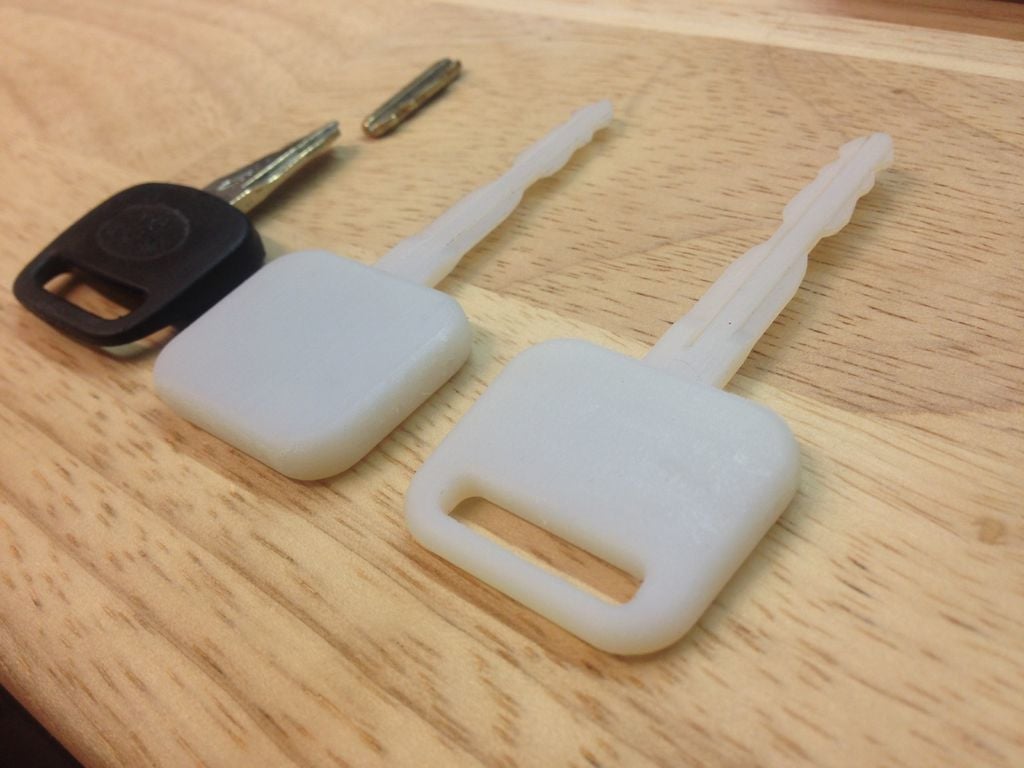
These 3D prints aren’t exactly what “3D printed key” initially brings to mind. However, far from boring, these prints show the extent to which 3D printing has affected the old lock and key mechanism.
Car Key
Smithallen_studio from Instructables gives us a story that led him to create his (almost) successful 3D printed car key. He found himself in a predicament one morning with a broken key, and instead of going through the typical methods of key recovery, he turned to his trusty Connex500 resin printer.
Following some measuring, picture taking, modeling, and printing, he had his key. Unfortunately, the polypropylene-like material didn’t seem to hold up. The key broke while turning the lock, leaving the teeth inside the mechanism. Thankfully, using a screwdriver to turn the (now unlocked) mechanism is all it took to start the ignition.
TSA Master Keys
The next one is a bit of old news. TSA locks, the ones used for airline luggage, have been hacked for some time now. Sadly, it seems that little has been done to fix or warn people of this.
The entire matter began when Washington Post accidentally used a detailed picture of the keys, and the internet took care of the rest. The key models were and still are available on GitHub, including the previously secure Safe Skies master key. Although prints of these keys can be successful, it isn’t a trivial task. The small and precise shapes are tricky to print.
Despite this security breach, it seems that TSA locks are still widely in use, though some may argue that they were never secure to begin with.
Lock Picks
What could be the next best thing to 3D printing keys? 3D printing lock picks, of course. Why figure out a new way to break in when there are already proven methods to do so?
This project comes from Brian Benchoff, who showed off his creation on Hackaday. The inspiration came from a friend who jury-rigged a lock pick from a zip tie. From there, the idea of a plastic, 3D printed lockpick was born.
The initial idea was to print them on his Dimension FDM 3D printer, but it wasn’t enough. In order to print such small and precision-dependent objects, he turned to a higher-end printer: an Objet 30 Pro with .001-mm layer thickness. In the end, the picks worked but with a few hiccups in durability.
(Lead image source: Urban Alps AG via YouTube)

